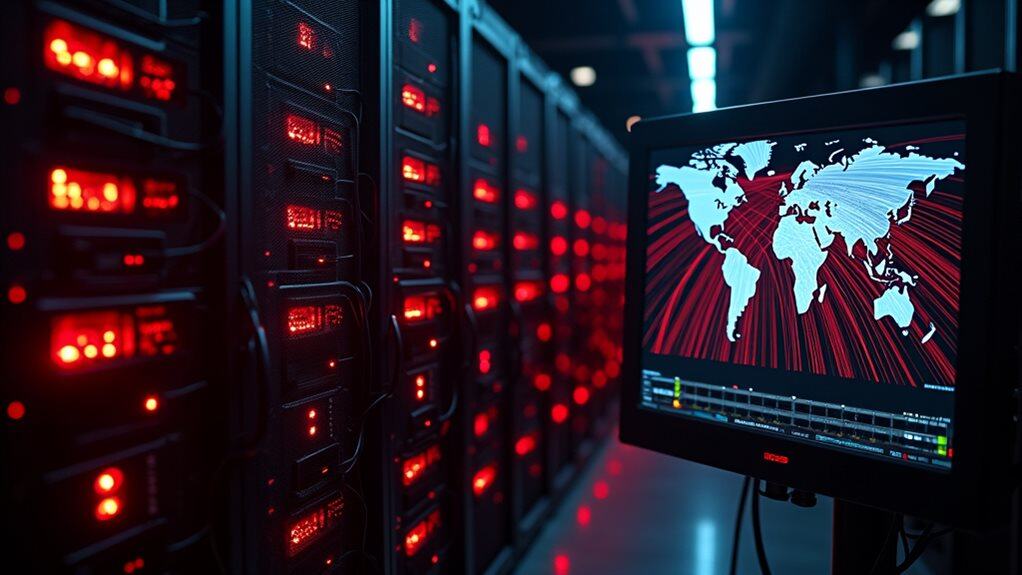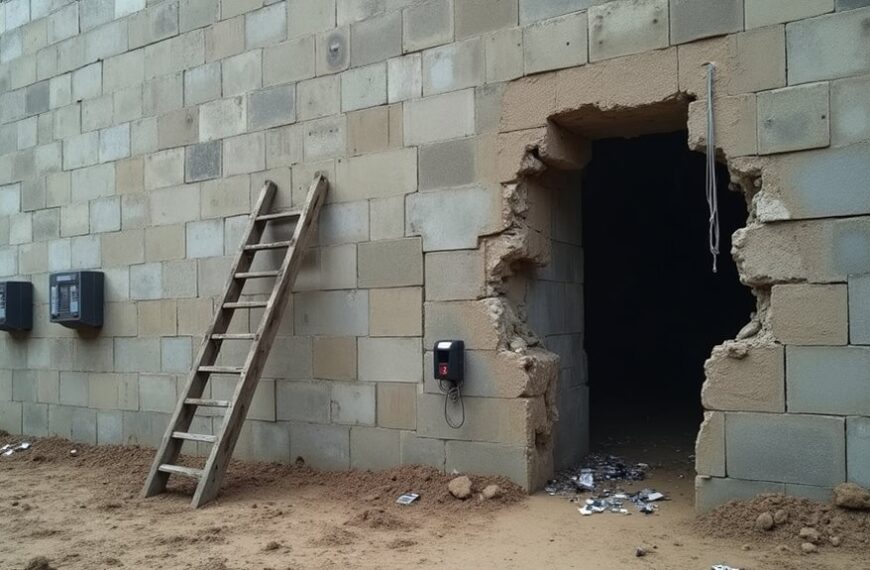The DDoS attacks that crippled X involved sophisticated botnet networks deploying multi-vector strategies that overwhelmed servers. Pro-Palestinian hacktivist group Dark Storm claimed responsibility through Telegram posts, though verification remains challenging. The attacks used millions of compromised computers and IoT devices, causing widespread disruptions for users. Financial implications could be severe, with platforms potentially losing millions during outages. These incidents highlight how digital infrastructure is increasingly becoming a battleground in wider conflicts.

While millions of users attempted to access X on Monday, the social media platform experienced significant disruptions due to a series of distributed denial-of-service (DDoS) attacks. These attacks overwhelmed X's servers with excessive traffic from multiple sources, making it nearly impossible for legitimate user requests to process normally.
X's servers crumbled under coordinated DDoS attacks, drowning legitimate user requests in a flood of malicious traffic.
You might've noticed error messages or slow loading times when trying to use the platform. This wasn't a simple technical glitch but a coordinated effort that forced X to activate Cloudflare's DDoS protection services to mitigate the damage.
A pro-Palestinian hacktivist group called Dark Storm claimed responsibility for the attacks. They provided evidence through Telegram posts and check-host.net, though verifying their claims remains challenging for external researchers without direct access to X's internal systems. Elon Musk has suggested that a large, coordinated group or possibly even a country might be involved in these sophisticated attacks.
The attack leveraged botnets—networks of compromised devices controlled remotely by attackers. These networks can include millions of infected computers and IoT devices, all unknowingly participating in flooding X's servers with requests.
What you may not realize is how sophisticated these attacks have become. Modern DDoS campaigns target various network connection layers simultaneously, making defense particularly difficult as security teams must distinguish legitimate traffic from malicious requests in real-time.
The financial implications for X are potentially severe. Large platforms can lose hundreds of thousands to millions of dollars per hour during such outages. Beyond immediate financial impact, these attacks damage reputation and user trust.
The geopolitical motivations behind the attack reflect a growing trend of hacktivism as digital protest. Dark Storm's actions align with broader goals of destabilizing prominent digital platforms for political visibility.
You're witnessing a new battlefield where digital infrastructure becomes a target in wider conflicts. Companies like X must now invest heavily in advanced mitigation tools, including AI-enhanced analytics, to defend against increasingly sophisticated attacks. The attacks against X appear to be multi-vector DDoS attacks, combining different attack strategies to bypass standard security measures.
As a user, you're caught in the middle of this digital conflict, experiencing the disruption firsthand while the complex technical battle unfolds behind the scenes.
Frequently Asked Questions
Who Orchestrated the DDOS Attacks Against X?
Dark Storm, a pro-Palestinian hacktivist group, claimed responsibility for the DDoS attacks against X.
They leveraged their botnet capabilities to orchestrate the assault, using thousands of compromised devices.
You can see evidence of their involvement through screenshots shared on Telegram and reports on Check-Host.net.
The group has previously targeted organizations in Israel, Europe, and the US.
Their sophisticated attack led to service interruptions, requiring Cloudflare protection and CAPTCHA implementation.
What Vulnerabilities in X's Infrastructure Enabled the Attack's Success?
X's infrastructure vulnerabilities enabled the attack's success in several ways.
Your servers lacked adequate DDoS protection and had exposed origin servers directly accessible from the internet. You didn't properly implement DDoS mitigation tools, and some servers weren't correctly placed behind Cloudflare's protection.
The security team reduction following Twitter's acquisition likely weakened your infrastructure security.
Additionally, your system struggled to differentiate between legitimate traffic and attack traffic, making defense particularly challenging.
How Much Did the DDOS Attacks Cost X Financially?
The financial impact of the DDoS attacks on X hasn't been officially disclosed.
You should consider that such attacks typically cost companies between hundreds of thousands to millions of dollars in damages.
The average cost of a DDoS attack in 2019 was $2.6 million, up from $1.6 million the previous year.
These costs likely include direct expenses for mitigation, lost revenue during downtime, and potential damage to X's reputation with users and advertisers.
Were Any Insider Threats Involved in Facilitating the Attacks?
Based on available evidence, there were no insider threats involved in facilitating the DDoS attacks on X.
All reports attribute these incidents to external threat actors, particularly the Dark Storm Team.
Security experts consistently point to outside hacktivist groups as the primary culprits.
While DDoS attacks can be complex to analyze, current investigations haven't uncovered any employee involvement or internal system compromises that would suggest insider participation in these specific attacks.
What Specific Countermeasures Has X Implemented Since the Attacks?
X has implemented several specific countermeasures since the attacks.
You'll find they've activated Cloudflare's DDoS protection services to filter malicious traffic and added CAPTCHA challenges for suspicious IP addresses.
They've also strengthened their origin servers against direct access and deployed web application firewalls.
Their incident response strategy now includes an extensive plan with clear protocols and better stakeholder coordination.
Additionally, they've improved traffic filtering capabilities and implemented request rate limiting to prevent future attacks.





